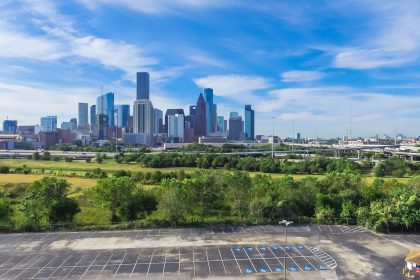The rise of remote work has revolutionized various aspects of our lives, particularly how we approach home buying. With the flexibility to work from anywhere, many people are rethinking their living situations and preferences. This shift has had significant implications for the housing market, influencing where people choose to live, the types of homes they seek, and the amenities they prioritize. In this article, we’ll explore how remote work is shaping home buying trends and what this means for both buyers and the real estate industry.
The shift to suburban and rural areas
One of the most notable trends influenced by remote work is the migration from urban centers to suburban and rural areas. With no need to commute daily to an office, many workers are opting for homes in less densely populated areas. These regions often offer more space, lower costs, and a higher quality of life.
Space and affordability
Remote work has enabled individuals and families to prioritize space and affordability over proximity to the workplace. Larger homes with dedicated office spaces, bigger yards, and more room for family activities have become highly desirable. This trend is particularly evident among young families and professionals who no longer see the need to pay a premium for living in a city center.
Quality of life
The appeal of suburban and rural living goes beyond just space and affordability. These areas typically offer a quieter, more peaceful environment, better air quality, and access to outdoor recreational activities. This shift has been especially pronounced during the COVID-19 pandemic, as people sought more space and safer environments.
Changing home features and amenities
Remote work has influenced where people buy homes and what features and amenities they prioritize. The traditional concept of a home has evolved to accommodate the new needs of remote workers.
Home offices and flexible spaces
A dedicated home office has become a top priority for many homebuyers. In the past, a spare bedroom or a corner of the living room might have sufficed, but now, a well-designed, private workspace is essential. Homes with multiple flexible spaces that can serve as offices, study areas for children, or hobby rooms are in high demand.
Technological requirements
Reliable high-speed internet is crucial for remote work. Homebuyers are increasingly considering the quality of internet service in potential new homes. Properties in areas with limited connectivity may be less attractive, regardless of other appealing features. Additionally, smart home technology that enhances productivity, security, and comfort is becoming more sought after.
Impact on the real estate market
The shift to remote work has had significant repercussions on the real estate market, affecting both supply and demand dynamics.
Increased demand for certain types of properties
The demand for single-family homes with ample space has surged, while the market for smaller apartments and condos in urban centers has seen a decline. This has led to increased competition and rising prices in suburban and rural real estate markets. Builders and developers are responding by focusing more on these areas, leading to a boom in new construction projects.
Changes in rental markets
The rental market has also experienced changes due to remote work. Many urban apartments face higher vacancy rates as former renters move to the suburbs or purchase homes. This shift has forced landlords to offer more incentives and flexible lease terms to attract tenants. On the other hand, suburban and rural rental properties are seeing increased demand, pushing up rental prices in these areas.
Long-term implications
While some of the changes in home buying trends may stabilize as the world adjusts to a post-pandemic reality, many are likely to persist. The flexibility of remote work has reshaped priorities and preferences in ways that will have lasting effects.
Sustainability and resilience
The move towards suburban and rural living can contribute to more sustainable and resilient communities. These areas can develop more self-sufficient local economies with less dependence on urban infrastructure. The reduced need for daily commuting can also lead to lower carbon emissions and less traffic congestion.
Evolution of urban areas
Urban areas may need to evolve to remain attractive to residents. This could involve rethinking urban planning to create more green spaces, enhancing public transportation, and offering incentives for businesses to maintain a physical presence. Cities may also focus on improving the quality of life by investing in amenities that attract remote workers who prefer urban living.
Remote work is undeniably shaping home buying trends in profound ways. The housing market is adapting to new realities, from the migration to suburban and rural areas to the demand for homes with dedicated office spaces and reliable internet. These changes offer both challenges and opportunities for home buyers, real estate professionals, and urban planners. As remote work continues to evolve, so too will the ways we think about and choose our homes, ultimately reshaping our communities and lifestyles for the better.
This story was created using AI technology.

















